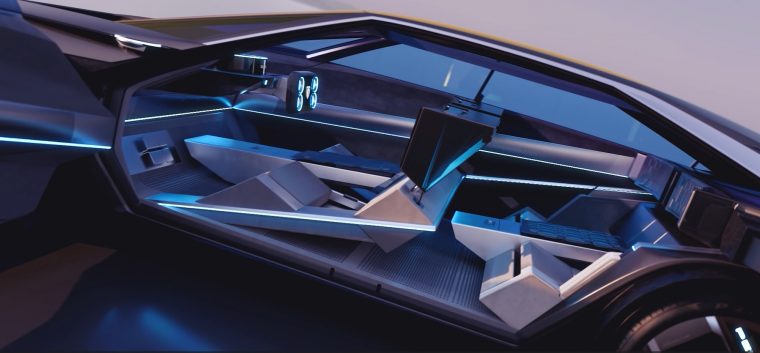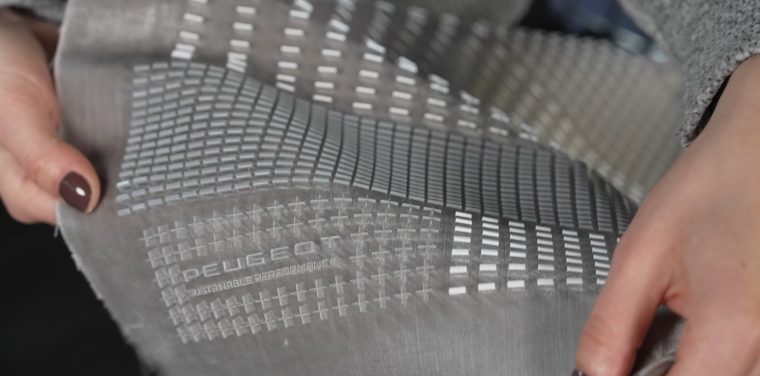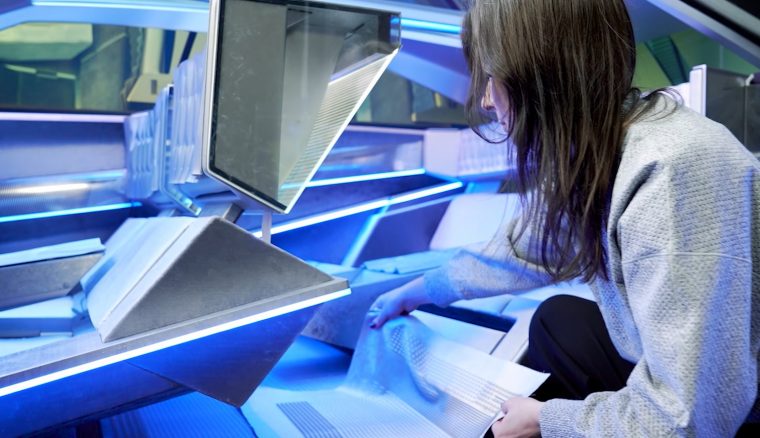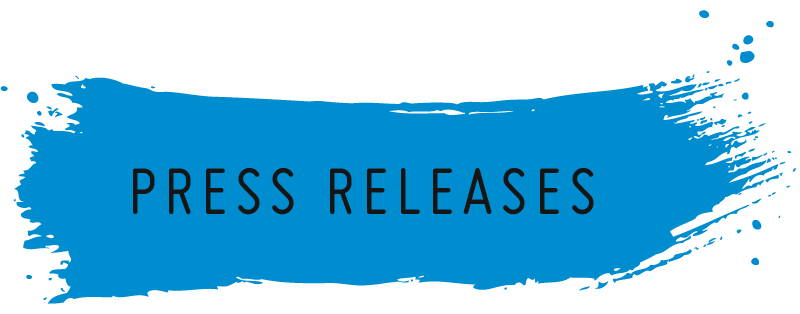- 3D Print Bureau
- 6K
- Agmatix
- Airwayz
- AM-Flow
- Appadda
- Caracol
- CG Trader
- CyberOptics
- e-Xstream
- GenCell
- GreenEye
- Impossible Objects
- Incus Media
- InkBit
- ITG
- JPB Systeme
- KeyProd
- Landa
- LEO Lane
- Lumet
- Magic Software
- MakerBot
- Marketiger
- Nano Dimension
- Paragon Rapid Technologies
- PearlX
- Plant & Bean
- Redefine Meat
- Replique
- Ripples
- Sakuu Corporation
- SolarEdge
- StoreDot
- Stratasys
- Sunrock
- The Bespoke Group
- Trigo
- UltiMaker
- Xjet
PEUGEOT DRIVES NEW REVOLUTION IN CAR INTERIOR DESIGN WITH STRATASYS 3DFASHION TECHNOLOGY
Stratasys 3D Fashion technology to support new era for brand’s electric vehicles.
Produces visually impactful interiors incorporating 3D printed patterns onto velvet.
Watch the video of Peugeot CMF designer Maud Rondot talking about the project here.
EDEN PRAIRIE, Minn., and REHOVOT, Israel, June 20, 2023 – Stratasys Ltd. (Nasdaq: SSYS), a leader in polymer 3D printing solutions, today announced that global automotive manufacturer Peugeot has integrated Stratasys’ innovative 3DFashion™ technology into the interior of its new Inception concept, achieving a level of resolution that would not have been possible with traditional embellishment methods.
Heralding a new era for the Stellantis-owned Peugeot brand and embodying its vision for future electric vehicles, the Inception concept is the first design manifesto led by the company’s brand design director, Matthias Hossann, and represents a major change for the marque. The car incorporates an interior design described by the company as ‘revolutionary’, and features advanced materials produced exclusively using Stratasys J850™ TechStyle™ 3D printers.
The vehicle interior of the Inception concept is aligned with Peugeot’s new design architecture for electric vehicles. It features a minimalistic cockpit designed to support the car’s overall objective of reinventing the driver experience. Integral to this experience are immersive seats covered with a velvet made from 100% recycled polyester. This velvet extends onto the floor and features stunning 3D patterns created with Stratasys’ 3D printing technology.
“At Peugeot, we always like to combine function with aesthetics,” said Maud Rondot, CMF Designer, Advanced Design Team at Peugeot, the department responsible for the future vision of the Peugeot brand. “Our objective with the Inception concept’s seating area was to modernize the velvet material used and decompartmentalize the design by extending it to also serve as a visually impactful floor mat,” she explained.
According to Rondot, where the floor area space would typically need to be treated with a protective overlay, the Inception concept instead leverages direct-to-textile 3D printing to deliver a unique coalescence of functionality, texture and aesthetics. She believes this would not have been achievable with other technologies.
“Although we have access to relatively flat designs with current embellishment methods, it is not possible to build thickness and height. This is why we turned to Stratasys, and it is thanks to the company’s exclusive 3DFashion technology that we could 3D print directly onto the flexible material,” she added. “Often, there is a delta between what we imagine and what we can obtain, so it was quite magical to see our idea arrive precisely as envisaged and with a remarkable quality of execution.”
A fundamental theme of the Inception concept aims to capture the relationship between materials and light, which required the Peugeot Advanced Design team to use materials that would befit the car’s specific look and embody the brand’s vision for future electric vehicles.
To support this move towards new architecture, new space and decompartmentalization, Peugeot worked with single material effects. This saw the team select a metallic shade for the velvet, which is designed both visually and symbolically to play with light and convey something more futuristic, before using the J850 TechStyle 3D printer to create the semi-transparent ‘micro-architectures’.
“Instead of covering the whole stretch of material, it was really advantageous that we could leave the velvet visible,” Rondot added. “3D printing gave us the ability to modify and reprint the files very easily, but also important is its durability and efficiency; indeed, as a technology it doesn’t require molds, which is revolutionary in terms of industrialization.”
-
 The interior of Peugeot’s Inception Concept car uses velvet material that extends from the seats to the floor and features stunning 3D patterns created with Stratasys’ 3DFashion™ technology
The interior of Peugeot’s Inception Concept car uses velvet material that extends from the seats to the floor and features stunning 3D patterns created with Stratasys’ 3DFashion™ technology
Click here to download 300dpi images -
 Peugeot turned to Stratasys to meet its need to 3D print directly onto flexible velvet material
Peugeot turned to Stratasys to meet its need to 3D print directly onto flexible velvet material
Click here to download 300dpi images -
 The use of Stratasys’ 3DFashion™ technology within the Inception Concept car enabled Peugeot to incorporate 3D printed ‘micro-architectures’ into the velvet material used on the seats and floor area
The use of Stratasys’ 3DFashion™ technology within the Inception Concept car enabled Peugeot to incorporate 3D printed ‘micro-architectures’ into the velvet material used on the seats and floor area
Click here to download 300dpi images
PEUGEOT RÉVOLUTIONNE LE DESIGN INTERIEUR DE SA VOITURE GRÂCE À LA TECHNOLOGIE 3DFASHION DE STRATASYS
La technologie 3DFashion de Stratasys pour soutenir la nouvelle ère des véhicules électriques de la marque.
Peugeot produit d’intérieurs de grand impact visuel intégrant des motifs imprimés en 3D sur du velours.
Regardez la vidéo de Maud Rondot, designer couleurs et matières de Peugeot, qui parle de ce projet ici.
EDEN PRAIRIE, Minn., et REHOVOT, Israël, 21 juin 2023 – Stratasys Ltd. (Nasdaq : SSYS), leader des solutions d’impression 3D de polymères, a annoncé aujourd’hui que le constructeur automobile mondial Peugeot a intégré la technologie innovante 3DFashion™ de Stratasys dans l’habitacle de son nouveau concept car Inception, atteignant ainsi un niveau de résolution qui n’aurait pas été possible avec d’autres techniques traditionnelles de décoration .
Annonçant une nouvelle ère pour la marque Peugeot, propriété de Stellantis, et incarnant sa vision des futurs véhicules électriques, le concept car Inception est le premier manifeste de design mené par le directeur du design de la marque, Matthias Hossann. Il s’agit d’un tournant majeur pour la marque. La voiture intègre un design intérieur décrit par l’entreprise comme « révolutionnaire », réalisé à partir de matériaux 3D avancés produits exclusivement avec les imprimantes 3D Stratasys J850™ TechStyle™.
L’intérieur du concept car Inception s’aligne sur la nouvelle architecture de design de Peugeot pour les véhicules électriques. Il est doté d’un tableau de bord minimaliste conçu pour renforcer l’objectif global du véhicule, qui est de révolutionner l’expérience du conducteur. Les sièges immersifs, qui font partie intégrante de cette expérience, sont recouverts d’un velours à base de polyester 100 % recyclé. S’étendant jusque sur le plancher, il présente de superbes motifs 3D créés par la technologie d’impression 3D de Stratasys.
« Chez Peugeot, nous aimons allier fonction et esthétique », explique Maud Rondot, CMF Designer, Advanced Design Team chez Peugeot, le département responsable de la vision future de la marque Peugeot. « Notre objectif pour les sièges du concept car Inception était de moderniser le velours utilisé et de décloisonner le design en le prolongeant pour qu’il serve également de tapis de sol, pour produire ainsi un fort impact visuel », a-t-elle expliqué.
Selon Maud Rondot, là où la surface au plancher devrait normalement être traitée avec un revêtement protecteur, le concept car Inception s’appuie sur l’impression 3D directe sur textile pour offrir une coalescence unique de fonctionnalité, de texture et d’esthétique. Elle estime que cela n’aurait pas été possible avec d’autres technologies.
« Bien que nous ayons accès à des designs relativement plats avec les méthodes d’embellissement actuelles, il n’est pas possible de créer de l’épaisseur et de la hauteur. Voilà pourquoi nous nous sommes tournés vers Stratasys, et c’est grâce à sa technologie exclusive 3DFashion que nous avons pu imprimer en 3D directement sur le matériau souple », elle a ajouté. « Il y a souvent un décalage entre ce que l’on imagine et ce que l’on peut obtenir, c’était donc assez magique de voir notre idée se concrétiser exactement comme prévu, avec une qualité d’exécution remarquable. »
L’un des points fondamentaux du concept car Inception visait à capturer la relation entre les matériaux et la lumière. L’équipe de Peugeot Advanced Design devait donc utiliser des matériaux adaptés à l’aspect particulier de cette voiture, mais aussi capables d’incarner la vision de la marque pour les futurs véhicules électriques.
Pour accompagner cette évolution vers une nouvelle architecture, un nouvel espace et un décloisonnement, Peugeot a travaillé sur des effets de matière uniques. La teinte métallique qui a ainsi été choisie pour le velours répond à un concept à la fois visuel et symbolique, capable de jouer avec la lumière tout en transmettant une image plus futuriste. L’imprimante 3D J850 TechStyle a ensuite été utilisée pour créer les « micro-architectures » semi-transparentes.
« Au lieu de recouvrir toute la bande de tissu, il était bien plus judicieux de laisser le velours apparent », Maud Rondot a ajouté. « L’impression 3D nous permettait de modifier et de réimprimer les fichiers très facilement, mais sa durabilité et son efficacité se sont également révélées très importantes, dans la mesure où cette technologie ne nécessite pas de moules, ce qui est révolutionnaire en termes d’industrialisation. »
-
 L'intérieur du concept car Inception de Peugeot utilise un matériau en velours qui s'étend des sièges au plancher, orné de superbes motifs 3D créés avec la technologie 3DFashion™ de Stratasys.
L'intérieur du concept car Inception de Peugeot utilise un matériau en velours qui s'étend des sièges au plancher, orné de superbes motifs 3D créés avec la technologie 3DFashion™ de Stratasys.
Click here to download 300dpi images -
 Peugeot s'est tourné vers Stratasys pour répondre à son besoin d'imprimer en 3D directement sur un matériau en velours souple
Peugeot s'est tourné vers Stratasys pour répondre à son besoin d'imprimer en 3D directement sur un matériau en velours souple
Click here to download 300dpi images -
 Le recours à la technologie 3DFashion™ de Stratasys dans l'intérieur du concept car Inception a permis à Peugeot d'incorporer des « micro-architectures » imprimées en 3D dans le matériau en velours utilisé sur les sièges et le plancher
Le recours à la technologie 3DFashion™ de Stratasys dans l'intérieur du concept car Inception a permis à Peugeot d'incorporer des « micro-architectures » imprimées en 3D dans le matériau en velours utilisé sur les sièges et le plancher
Click here to download 300dpi images
PEUGEOT REVOLUTIONIERT DIE INNENAUSTATTUNG VON AUTOS MIT DER 3DFASHION-TECHNOLOGIE VON STRATASYS
Stratasys 3DFashion-Technologie wird die neue Ära für die Elektrofahrzeuge der Marke unterstützen
Produziert wird ein visuell beeindruckendes Interieur mit 3D-gedruckten Mustern auf Samt
Hier können Sie sich das Video ansehen, in dem die CMF-Designerin Maud Rondot von Peugeot über das Projekt spricht.
EDEN PRAIRIE, Minn., und REHOVOT, Israel, 21. Juni 2023 – Stratasys Ltd. (Nasdaq: SSYS), ein führender Anbieter von Polymer-3D-Drucklösungen, gab heute bekannt, dass der globale Automobilhersteller Peugeot die innovative 3DFashion™-Technologie von Stratasys für die Innenausstattung seines neuen Inception-Konzepts nutzt. So wird eine Auflösung erzielt, die mit traditionellen Methoden nicht zu erreichen wäre.
Für die im Besitz von Stellantis befindliche Marke Peugeot läutet dies eine neue Ära ein. Das Inception-Konzept verkörpert die Zukunftsvision für Elektrofahrzeuge und ist der erste veröffentlichte Entwurf unter der Leitung von Matthias Hossann, dem neuen Designdirektor der Marke Peugeot. Für die Automarke geht dies mit einer umfassenden Veränderung einher. Das Unternehmen beschreibt die Innenausstattung des Autos als „revolutionär“. Die modernen Materialien werden exklusiv nur mit dem 3D-Drucker J850™ TechStyle™ von Stratasys produziert.
Beim Inception-Konzept orientiert sich die Innenausstattung an der neuen Designarchitektur für Elektrofahrzeuge von Peugeot. Das Cockpit ist minimalistisch gehalten und dient so dem allgemeinen Ziel einer Neuerfindung des Fahrerlebnisses. Ein wesentlicher Bestandteil dieses Erlebnisses sind die faszinierenden Sitze, die mit einem Samtmaterial aus vollständig recyceltem Polyester bezogen sind. Dieser Samt geht bis zum Boden und hat verblüffende 3D-Muster. Erstellt wurde er mit der 3D-Drucktechnologie von Stratasys.
„Peugeot kombiniert Funktion und Ästhetik immer gerne“, sagte Maud Rondot, CMF-Designerin im Advanced Design Team von Peugeot, der Abteilung, die zuständig ist für die Zukunftsvision der Marke. „Unser Ziel für den Sitzbereich des Inception-Konzepts war es das verwendete Samtmaterials zu modernisieren und das Design zu entflechten, indem wir es auch als visuell beeindruckende Bodenmatte einsetzen”, erklärte sie.
Der Bodenbereich müsste laut Rondot normalerweise mit einer Schutzschicht behandelt werden. Beim Inception-Konzept verwendet man stattdessen den direkten 3D-Druck auf Textilien und vereinigt so Funktionalität, Textur und Ästhetik auf einmalige Weise. Laut Rondot wäre dies mit anderen Technologien nicht möglich gewesen.
„Bei den aktuellen Methoden zur Verschönerung verfügen wir über relativ flache Designs, man kann aber keine Dicke und Höhe erzeugen. Darum haben wir uns an Stratasys gewandt. Und dank der exklusiven 3DFashion-Technologie des Unternehmens konnten wir per 3D-Druck direkt auf das flexible Material drucken“, so Rondot weiter. „Oft gibt es eine Diskrepanz zwischen dem, was wir uns vorstellen, und dem, was möglich ist. Deshalb war es wunderbar, zu sehen, dass wir unsere Idee mit einer beachtlichen Qualität genauso umsetzen konnten wie vorgesehen.“
Die Beziehung zwischen Materialien und Licht ist ein grundlegendes Thema des Inception-Konzepts. Das Advanced Design Team von Peugeot musste daher geeignete Materialien für das besondere Erscheinungsbild des Autos verwenden. Sie sollten die Vision der Marke für die Elektrofahrzeuge der Zukunft verkörpern.
Um diese Entwicklung hin zu einer neuen Architektur, einem neuen Raum und einer Entflechtung zu unterstützen, arbeitete Peugeot mit einzelnen Materialeffekten. Beim Samt entschied sich das Team für einen Metallic-Farbton, der sowohl optisch als auch symbolisch mit dem Licht spielt und einen irgendwie futuristischen Eindruck vermittelt. Danach wurde die halbtransparente „Mikroarchitektur“ mit dem 3D-Drucker J850 TechStyle erstellt.
„Es war wirklich hilfreich, dass der Samt sichtbar bleiben konnte, statt den gesamten Materialbereich abzudecken“, so Rondot weiter. „Durch den 3D-Druck konnten wir die Dateien sehr einfach ändern und erneut Drucken. Aber auch die Langlebigkeit und Effizienz ist wichtig. Bei dieser Technologie benötigt man tatsächlich keine Formen. In industrieller Hinsicht ist dies revolutionär.“
-
 Für die Innenausstattung der Peugot Inception Concept wird von den Sitzen bis zum Boden ein Samtmaterial mit verblüffenden 3D-Mustern verwendet. Erstellt wurde es mit der 3DFashion™-Technologie von Stratasys.
Für die Innenausstattung der Peugot Inception Concept wird von den Sitzen bis zum Boden ein Samtmaterial mit verblüffenden 3D-Mustern verwendet. Erstellt wurde es mit der 3DFashion™-Technologie von Stratasys.
Click here to download 300dpi images -
 Für den 3D-Druck direkt auf flexiblem Samtmaterial wandte sich Peugeot an Stratasys.
Für den 3D-Druck direkt auf flexiblem Samtmaterial wandte sich Peugeot an Stratasys.
Click here to download 300dpi images -
 Durch die Nutzung der 3DFashion™-Technologie von Stratasys konnte Peugeot beim Inception Concept Car 3D-gedruckte „Mikroarchitekturen“ in das Samtmaterial der Sitze und des Bodenbereichs integrieren
Durch die Nutzung der 3DFashion™-Technologie von Stratasys konnte Peugeot beim Inception Concept Car 3D-gedruckte „Mikroarchitekturen“ in das Samtmaterial der Sitze und des Bodenbereichs integrieren
Click here to download 300dpi images
PEUGEOT PROMUOVE UNA NUOVA RIVOLUZIONE NEL DESIGN DEGLI INTERNI AUTO CON LA TECNOLOGIA STRATASYS 3DFASHION
La tecnologia 3D Fashion di Stratasys supporta la nuova era dei veicoli elettrici del marchio.
Produce interni di grande impatto visivo incorporando modelli stampati in 3D su velluto.
Guarda il video in cui Maud Rondot, designer di Peugeot CMF, parla del progetto qui.
EDEN PRAIRIE (Minnesota) e REHOVOT (Israele), 21 giugno 2023 – Stratasys Ltd. (Nasdaq: SSYS), leader nelle soluzioni di stampa 3D a base di polimeri, ha annunciato oggi che la casa automobilistica Peugeot ha integrato l’innovativa tecnologia 3DFashion™ di Stratasys negli interni dell’Inception, la sua nuova concept car, raggiungendo un livello di risoluzione che non sarebbe stato possibile con le tecniche di lavorazione tradizionali.
Inaugurando una nuova era per il marchio Peugeot, di proprietà di Stellantis, e interpretando la sua visione dei futuri veicoli elettrici, la Inception è il primo prototipo realizzato sotto la direzione di Matthias Hossann, responsabile del design, e rappresenta un cambiamento importante per il brand. L’auto presenta un design degli interni che l’azienda non esita a definire “rivoluzionario”, ottenuto grazie agli avanzati materiali impiegati esclusivamente dalle stampanti 3D Stratasys J850™ TechStyle™.
Gli interni della concept car si allineano alla nuova architettura di design di Peugeot per i veicoli elettrici. Si caratterizzano per il minimalismo dell’abitacolo, progettato per supportare l’obiettivo complessivo di reinventare l’esperienza del guidatore. I sedili, che sono parte integrante di questa esperienza, sono avvolgenti e rivestiti da un velluto realizzato in poliestere riciclato al 100%. Questo velluto ricopre anche il pavimento, presentando straordinari motivi 3D creati con la tecnologia di stampa 3D di Stratasys.
“In Peugeot amiamo sempre coniugare funzionalità ed estetica”, ha affermato Maud Rondot, CMF Designer, Advanced Design Team di Peugeot, il reparto responsabile della visione di futuro del marchio Peugeot. “L’obiettivo per le sedute della Inception era quello di modernizzare il materiale di velluto utilizzato e di scomporre il design estendendolo anche al pavimento come tappetino per un grande impatto visivo”, ha spiegato.
Secondo Rondot, là dove lo spazio dell’area del pavimento avrebbe richiesto un rivestimento protettivo, la concept Inception sfrutta la stampa 3D diretta su tessuto per offrire un mix unico di funzionalità, texture ed estetica. Rondot pensa che questo non sarebbe stato possibile con altre tecnologie.
“Con i metodi di lavorazione attuali abbiamo accesso a motivi relativamente piatti, ma non è possibile creare spessore e altezza. Per questo motivo ci siamo rivolti a Stratasys e grazie all’esclusiva tecnologia 3DFashion abbiamo potuto stampare in 3D direttamente sul materiale flessibile”, ha aggiunto. “Spesso c’è una certa distanza tra quello che immaginiamo e quello che possiamo ottenere, per questo è stato davvero magico vedere la nostra idea concretizzarsi esattamente come l’avevamo immaginata e con una qualità di esecuzione notevole”.
Uno degli aspetti fondamentali della Inception è la volontà di catturare il dialogo tra i materiali e la luce, che ha richiesto al team di progettazione avanzata di Peugeot l’utilizzo di materiali in grado di adattarsi alla specificità estetica dell’auto e di interpretare la visione del marchio per i futuri veicoli elettrici.
A supporto di questo passaggio verso una nuova architettura, un nuovo spazio e la scomposizione, Peugeot ha lavorato con singoli effetti materici. Il team ha scelto una tonalità metallica per il velluto, progettata sia visivamente che idealmente per giocare con la luce e trasmettere un concetto più futuristico, prima di utilizzare la stampante 3D J850 TechStyle per creare “microarchitetture” semitrasparenti.
“Invece di coprire tutta la superficie del materiale, è stato davvero utile poter lasciare il velluto a vista”, ha aggiunto Rondot. “La stampa 3D ci ha dato la possibilità di modificare e ristampare i file con estrema facilità, senza perdere di vista la durata e l’efficienza; si tratta infatti di una tecnologia che non richiede l’uso di stampi e questo è un aspetto rivoluzionario in termini di industrializzazione”.
-
 La concept car Inception di Peugeot utilizza un velluto che ricopre gli interni dai sedili al pavimento, presentando straordinari motivi 3D creati con la tecnologia 3DFashion™ di Stratasys
La concept car Inception di Peugeot utilizza un velluto che ricopre gli interni dai sedili al pavimento, presentando straordinari motivi 3D creati con la tecnologia 3DFashion™ di Stratasys
Click here to download 300dpi images -
 Peugeot si è rivolta a Stratasys per soddisfare la necessità di stampare in 3D direttamente sul materiale flessibile di velluto
Peugeot si è rivolta a Stratasys per soddisfare la necessità di stampare in 3D direttamente sul materiale flessibile di velluto
Click here to download 300dpi images -
 L'uso della 3DFashion™ di Stratasys sulla concept car Inception ha permesso a Peugeot di integrare "microarchitetture" stampate in 3D nel materiale di velluto utilizzato per i sedili e il pavimento
L'uso della 3DFashion™ di Stratasys sulla concept car Inception ha permesso a Peugeot di integrare "microarchitetture" stampate in 3D nel materiale di velluto utilizzato per i sedili e il pavimento
Click here to download 300dpi images





